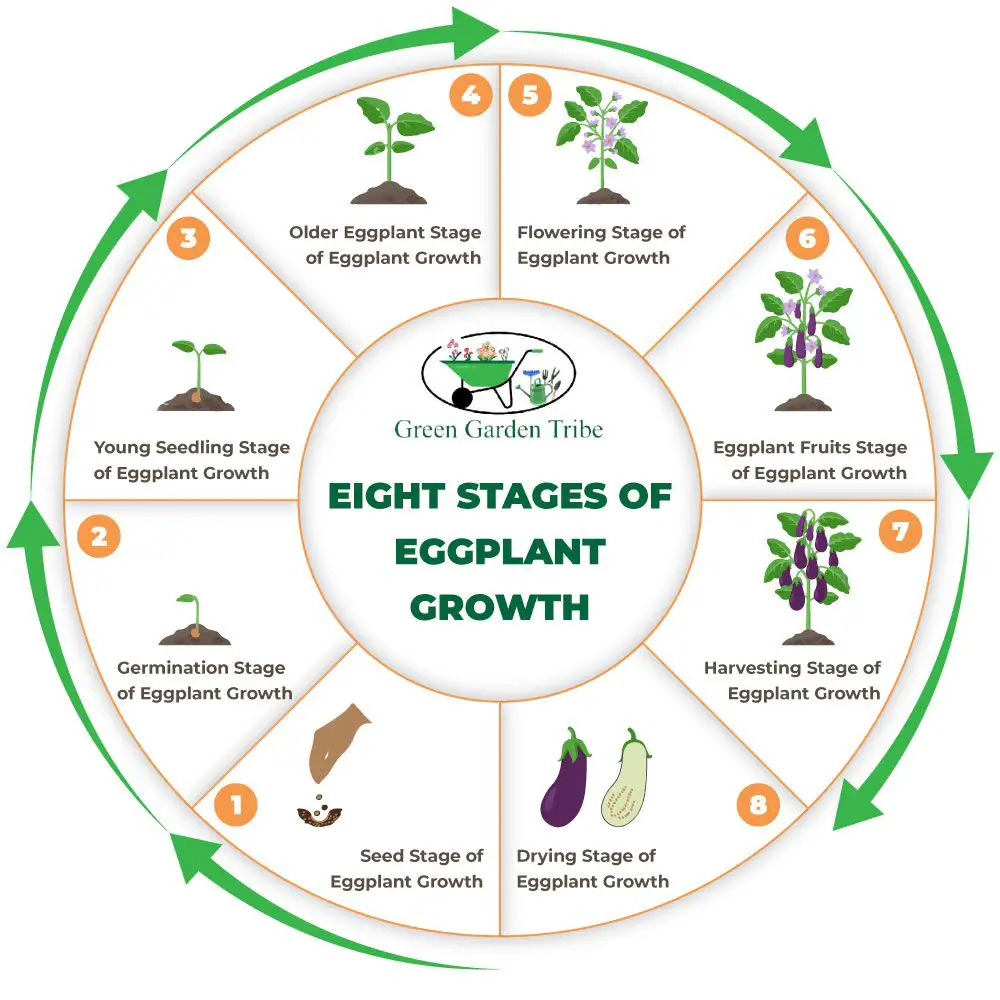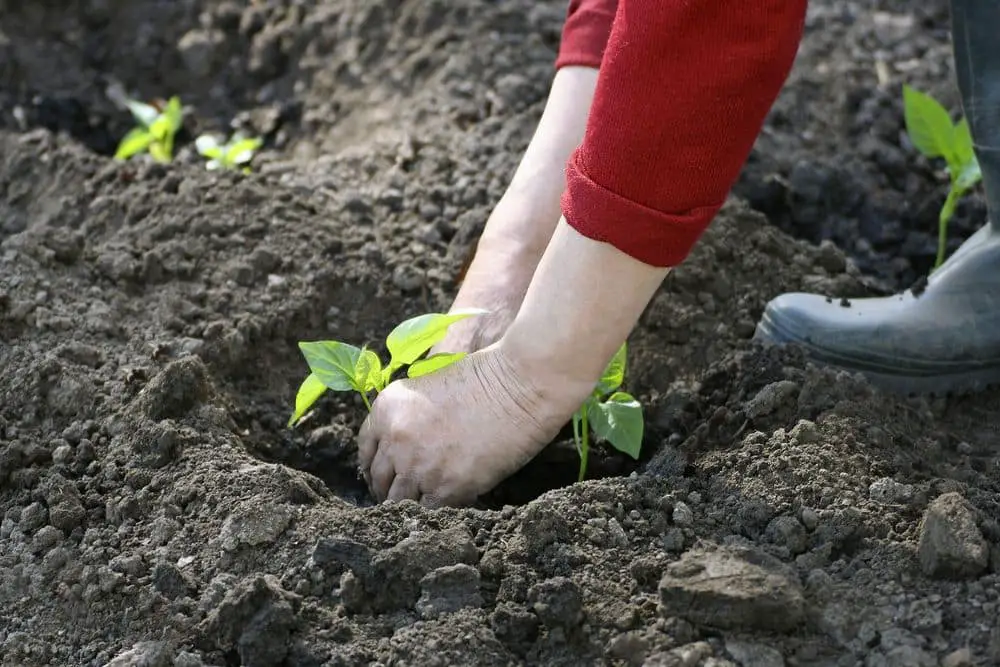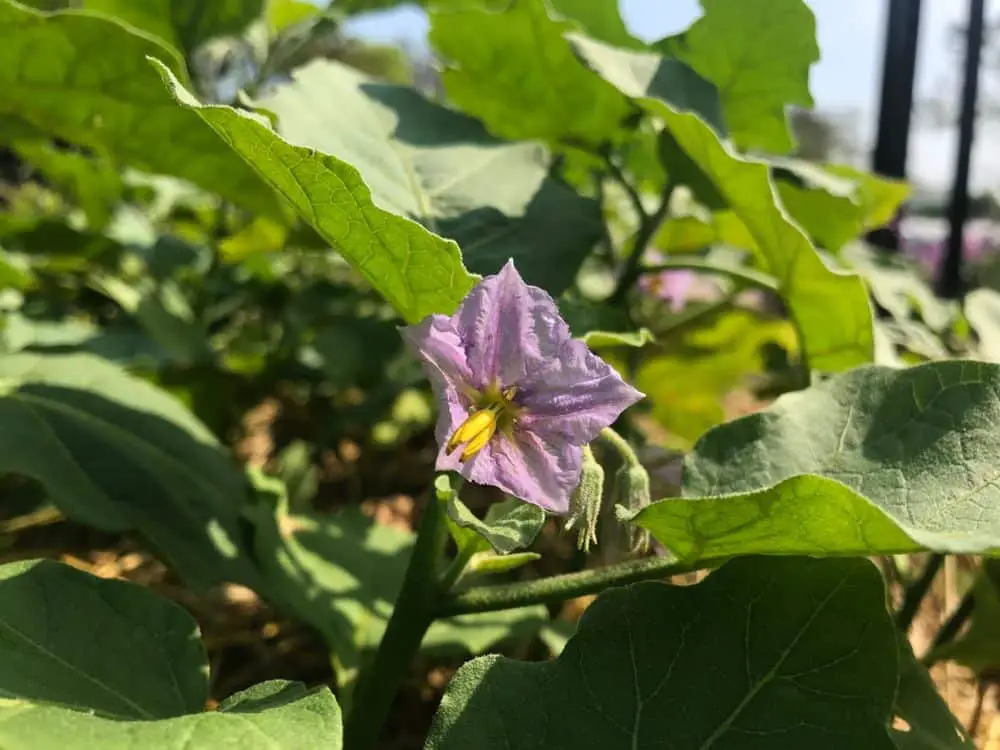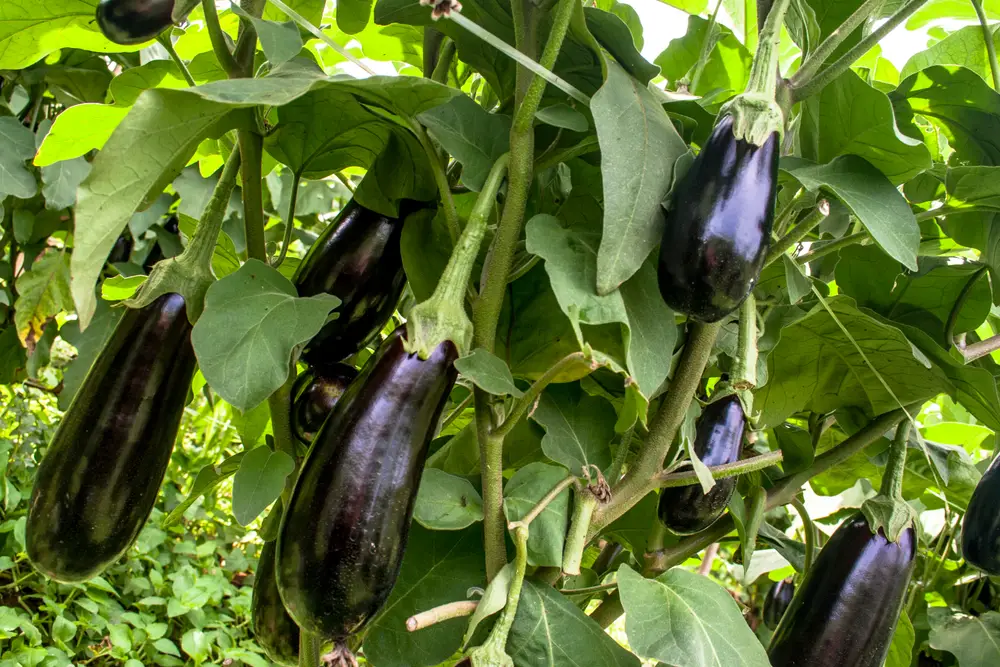Do you love eggplants? In this article, we discuss eight growing stages of the eggplant in detail.
Eggplant Growing Phases (From Seed to Drying)
Essentially, eggplant growth has eight growth stages: seeds, germination, young seedling, older plant, flowering, eggplant bearing, harvesting. Eggplant has to undergo these stages before it becomes available for distribution for us to enjoy.

1. Seed Stage of Eggplant Growth
Most plants start with just a tiny seed and eventually grow into big plants like we know today. The same is true for eggplants.
They start out small and will develop into bigger plants as time goes by.
The seed of the eggplant has a circular shape with a smooth and fair texture that goes from white to brown.
Every seed is different, so be familiar with eggplant seeds to spot them when you see one.
More importantly, the seeds must be at the right age to encourage growth. Young seeds have a lower survival percentage, and you don’t want that to happen.
The matured seeds are then set out to dry before being planted in individual pots.
If you want to have seeds, you can go the easy route and buy them from your local garden store or go extra by getting them from scrap.
Just wait for a mature eggplant to ripen until the color violet becomes vibrant and shiny. That is an indication of having quality seeds.
2. Germination Stage of Eggplant Growth
The next stage is called germination. This process is basically for the seeds to develop roots and small green leaves.
Not all seeds have successful germination, so it is necessary to choose quality seeds to increase the chances of adequate growth.
Moreover, to have effective germination, it is best first to plant the seeds in the seedbox. It’s a small container with the sole purpose of encouraging seed germination before they’re transplanted into bigger pots.
It may take three to seven days for the seeds to germinate and proceed to the next stage.
3. Young Seedling Stage of Eggplant Growth
The young seedling phase of eggplant development pertains to the small structure of eggplant, having shallow roots and few leaves. When the germination is successful, the seeds will form into a young seedling and become more delicate than ever.

They are very soft and can easily be damaged at this stage. They are potential victims of pest attacks. They can even be harmed by strong winds or be stepped on by animals.
This stage is demanding while being fulfilling at the same time because the seeds are growing. It will turn into a mature eggplant just a few stages away.
Furthermore, this is the stage where you can transplant them into individual pots. Just wait a little longer for them to grow for about 6 inches and have more leaves, and then they are good to go.
About two to three weeks is the safest time before you can transplant them.
4. Older Eggplant Stage of Eggplant Growth
This is when the plants start to get more established as they develop more leaves and stronger stems. They are not as sensitive compared to when they were young seedlings. This is a good sign that they are close to their final stage.
However, you still have to provide them with the necessary elements to proceed to the following stages of eggplant development.
Now the eggplant has to receive all the right elements – water, sunlight, and fertilizer. All these elements have to be in the right amount otherwise, it will put the eggplant at great risk.
Needless to say, this stage is more demanding than the previous one because there is a lot of tasks to do than simply protecting the branch from breaking.
Here is when you really need to apply yourself and spend the time and effort required by these final steps. Worry not because it will be all worth it in the end.
Besides, you’ll get used to it as time goes by, and all the tasks will be nothing but a simple routine for you every day. A good cop of eggplants should make it all worthwhile.
5. Flowering Stage of Eggplant Growth
When provided with enough nutrients, the eggplants will produce flowers as a sign of healthy growth.
This also means that the plants are about three to four months old and close to maturity. The flowers of eggplants are small and smooth and coloured purple.
Take note that this stage also means more fertilizer and water is needed. That is because producing flowers consume a lot of nutrients.

Hence, they’ll need more fertilizer and constant watering to achieve a balance and get them successfully through this phase.
At this time, they are prone to attracting pests due to the flowers. Be sure to prepare some pest killers to kill them right away when you see them.
Once the plants survive this stage, they are now ready to bear an eggplant.
6. Eggplant Fruits Stage of Eggplant Growth
After the flowering stage, an eggplant fruit will sprout from the flowers. Over time, it will gradually increase in size.
This is when things get really exciting because you will witness the fruit of your labor for the first time.
You will notice a slight green ball, but it will change into violet as it ripens. Every eggplant fruit comes in different sizes and shapes, so don’t worry about anything yet.
What is important is they produce eggplant fruit, and that means success. But don’t let your guard down because there are predators trying to get a hold of the beautiful eggplant fruit.
Pest attacks are possible at this stage, so be wary at all times. Just a little effort to protect them is required at this point, and you will indeed have plenty when harvest season arrives.
7. Harvesting Stage of Eggplant Growth
The most awaited part and perhaps the happiest stage of the eggplant and all plants is the harvesting stage. Who doesn’t love harvesting? It’s the time where you enjoy the fruits of your labor.
You will know it is time to harvest when the eggplant has hardened enough and appears in its most beautiful violet color. Every eggplant differs in size and shape so don’t leave the small ones behind because they are still edible.
8. Drying Stage of Eggplant Growth
To some, harvesting might be the last stage of eggplant development, but it is important to recognize the process of producing seeds as part of the eggplant growing phases.
Besides, it is a cycle; thus, drying should be part of the eggplant growing phases. The drying stage allows the eggplant to age for more prolonged periods.
You can set aside one or two eggplants from your harvest to dry. The eggplant will then harden and turn brown, and eventually dries out.
By that time, the seeds from the dried eggplant are ready to be taken out and planted in a seedbox. This cycle continues, and that is basically how eggplants develop.
Eggplant Background
Eggplants are typically grown as an annual garden vegetable in most countries -particularly in tropical countries because eggplants are not tolerant of cold temperatures.
To maximize growth, the eggplant should be grown right around the summer season. Moreover, eggplants are otherwise known by the scientific name of Solanum melongena which is thought to have originated in India about 1500 years ago.
By the 19th century, they became available in most parts of the world.
Interestingly, eggplants are versatile vegetables because they can be cooked in many delicious dishes. The soft and creamy texture of eggplants makes them a good ingredient for baked meals.
Different cultures worldwide have other treatments when cooking eggplants, which speaks why this vegetable is so popular.
With that in mind, it begs the question, how does an eggplant develop? What are the growing stages of eggplants? The answers to those questions are set out above.
Eggplants are not special plants when it comes to development. They are similar to other plants that develop from seed and eventually grow into a wonderful crop.
Final Thoughts on the Eggplant Growing Phases (From Seed to Drying)
Like any other plant, eggplant has its own series of growing phases and battles along the way.
Now that you know the stages of eggplant growth, why not try growing them yourself?
Eggplant is an enjoyable and delicious vegetable perfect for cooking exquisite meals!
Read More:
11 Best Companion Plants for Spinach
Difference Between Peppers & Chilies (With Comparison Chart)

